
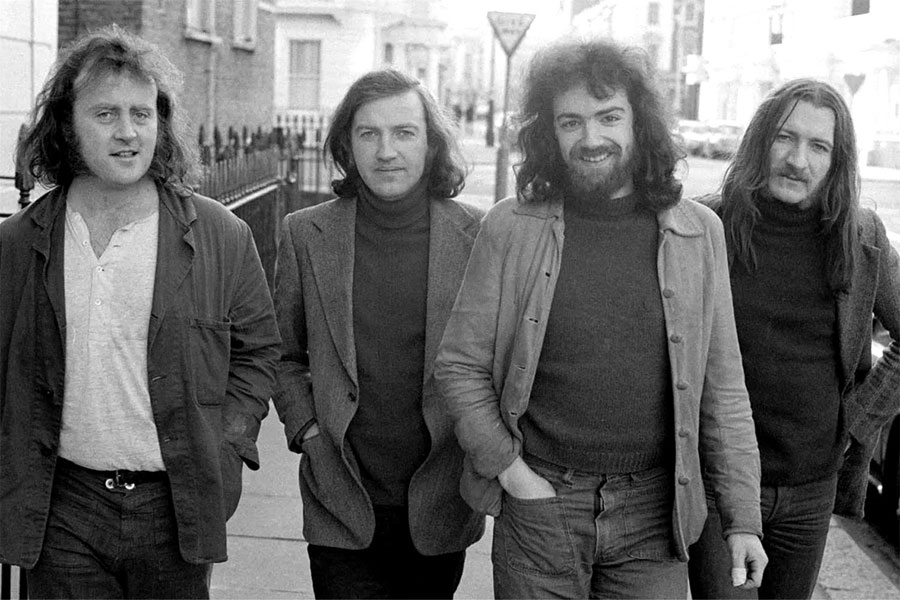
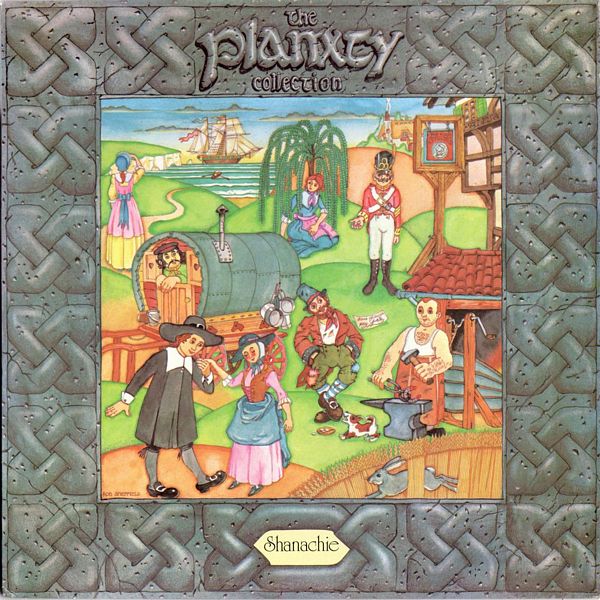 |
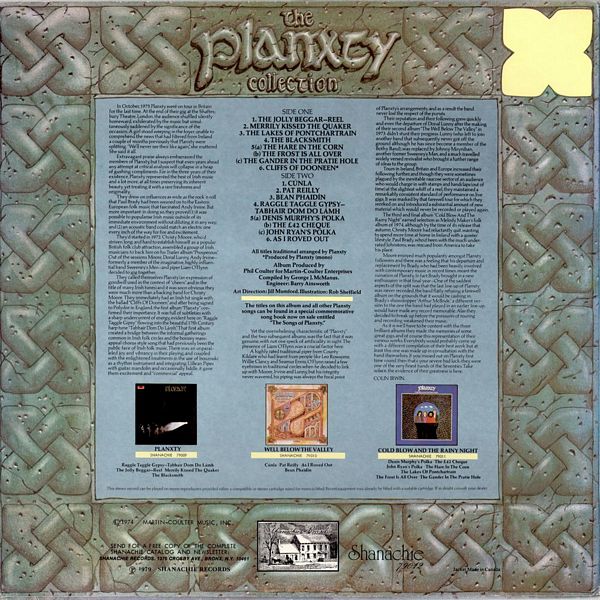
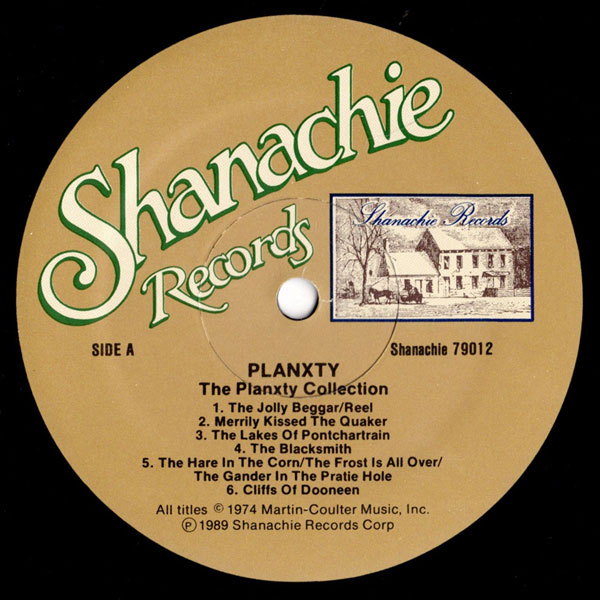
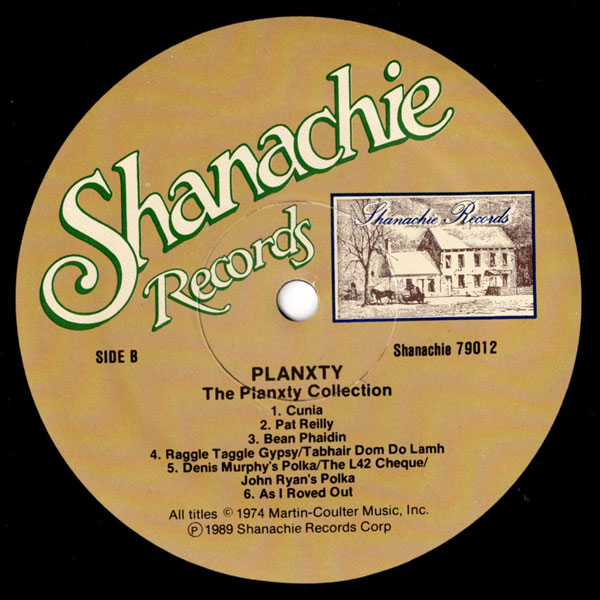 |
Sleeve Notes
In October, 1975 Planxty went on tour in Britain for the last time. At the end of thru gig at the Shatterbury Theatre, London, the audience shuffled silently homeward, exhilarated by the music but simultaneously saddened by the significance of the occasion. A girl stood weeping in the foyer, unable to comprehend the news that had filtered from Ireland a couple of months previously that Planxty were splitting. "We'll never see their like again," she muttered. She said it all.
Extravagant praise always embarrassed the members of Planxty, but I suspect that even years ahead any attempt at critical analysis will collapse in a heap of gushing compliments. For in the three years of their existence, Planxty represented the best or Irish music and a lot more, at all times preserving its inherent beauty, yet treating it with a rare freshness and originality.
They drew on influences as wide as the rock n roll that Paul Brady had been weaned on to the Eastern European folk music that fascinated Andy Irvine. But more important: in doing so, they proved (1) it was possible to popularise Irish music outside of its immediate environment without diluting it in any way; and (2) an acoustic band could match an electric one every inch of the way for fire and excitement.
They'd started in 1972. Christy Moore, who'd striven long and hard to establish himself as a popular British folk club attraction, assembled a group of Irish musicians to back him on his Trailer album "Prosperous." Out of the sessions Moore, Dónal Lunny, Andy Irvine- formerly a member of the imaginative, highly influential band Sweeney's Men-and piper Liam O'Flynn decided to gig together.
They called themselves Planxty (an expression of goodwill used in the context of "cheers" and in the title of many Irish tunes) and it was soon obvious they were much more than a backing band for Christy Moore.
They immediately had an Irish hit single with the ballad "Cliffs Of Dooneen," and after being signed to Polydor in England, the first album "Planxty" confirmed their importance. It was full of subtleties with a sharp undercurrent of energy, evident here on "Raggle Taggle Gipsy" flowing into the beautiful 17th Century harp tune "Tabhair Dom Do Lamh." That first album created a bridge between the informal gatherings common in Irish folk circles and the boozey mass-appeal chorus style song that had previously been the public face of Irish folk music. There was an unparalleled joy and vibrancy in their playing, and coupled with the enlightened treatments in the use of bouzouki as a rhythm instrument and integrating Uillean Pipes with guitar, mandolin and occasionally fiddle, it gave them excitement and "commercial" appeal.
Yet the overwhelming characteristic of "Planxty" and the two subsequent albums, was the fact that it was genuine, with not one speck of artificiality in sight. The presence of Liam O'Flynn was a crucial factor here.
A highly rated traditional piper from County Kildare who had learnt from people like Leo Rowsome, Willie Clancy and Searnus Ennis, O'Flynn raised a few eyebrows in traditional circles when he decided to link up with Moore, Irvine and Lunny but his integrity never wavered, his piping was always the focal point of Planxly's arrangements, and as a result the band never lost the respect of the purists.
Their reputation and their following grew quickly and even t he departure of Dónal Lunny after the making of their second album "The Well Below The Valley" in 1973 didn't stunt their progress. Lunny (who left to join another band that subsequently never got off the ground although he has since become a member of the Bothy Band), was replaced by Johnny Moynihan, another former Sweeney s Man, and a much travelled widely versed revivalist who brought a further range of ideas to the group.
Tours in Ireland, Britain and Europe increased their following further, and though they were sometimes plagued By the inevitable raucose sector of an audience who would charge in with stamps and handclaps (out of time) at the slightest whiff of a reel, they maintained a remarkably consistent standard of performance on live gigs. It was marked by that farewell tour for which they worked on and introduced a-substantial amount of .new material which would never be recorded or played again.
The third and final album "Cold Blow And The Rainy Night" earned selection as Melody Maker's folk album of 1974, although by the time of its release that autumn, Christy Moore had reluctantly quit, wanting to spend more time at home in Ireland with a quieter lifestyle. Paul Brady, who'd been with the much underrated johnstons, was rescued from America to take his place.
Moore enjoyed much popularity amongst Planxty followers and there was a feeling that his departure and replacement by Brady, who had been heavily involved with contemporary music in recent times, meant the ruination of Planxty. In fact Brady brought in a new enthusiasm in that final year-One of the saddest aspects of the split was that the last line-up of Planxty was never recorded, the band flatly refusing a farewell album on the grounds that it would be cashing in. Brady's showstopper "Arthur McBride," a different version to the one the band had played in an earlier line-up, would have made any record memorable. Alas they decided to break up before the pressures of touring and recording weakened their music.
As it is we'll have to be content with the three brilliant albums they made, the memories of some great gigs, and of course this representation of their various works. Everybody would probably come up with a different compilation of their best work but at least this one was made up in consultation with the band themselves, if you missed out on Planxty first time round, then that's your severe bad luck-they were one of the very finest bands of the Seventies. Take solace, the evidence of their greatness is here.
COLIN IRVVIN